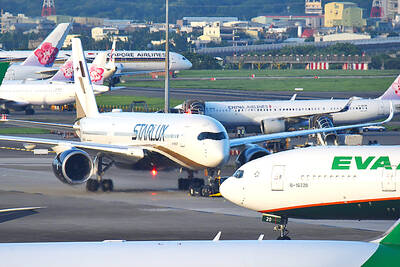European stock markets slid on Friday as a rally inspired by the US interest rate hike petered out heading into the weekend break.
The Frankfurt and Paris exchanges closed down more than 1 percent, while London ended the day off by 0.76 percent.
The euro picked up to US$1.0845 in foreign exchange deals, having fallen heavily on Wednesday after the US Federal Reserve raised borrowing costs for the first time in almost a decade.
Europe’s main indices rallied on Thursday after the US central bank ended months of uncertainty surrounding interest rate policy.
The Fed raised its benchmark federal funds rate, locked near zero since the 2008 financial crisis, by a quarter point to 0.25-0.5 percent, saying the US economy is growing solidly.
The move highlighted a growing divergence in monetary policy between the US policymakers and their overseas counterparts.
The European Central Bank and Bank of England are propping up the eurozone and British economy with billions of dollars worth of economic stimulus by buying assets such as bonds.
“Bullish Fed rhetoric can only get you so far,” said Michael Ingram, a market strategist at BGC Partners in London. “None of the worries about global growth and financial instability have really gone away. Given year-to-date performance, any Santa Rally is likely to prove cold comfort.”
The STOXX 600 rose 4.4 percent in the three days through Thursday on optimism that the Fed would judge the world’s biggest economy strong enough to cope with higher borrowing costs.
Exporters and financial companies led a rally on Friday after the Fed move.
While the STOXX 600 posted its first weekly rise in three, it is still down 6.3 percent this month. After a 14 percent jump from its September low through the end of last month, the gauge lost as much as 9.3 percent amid disappointing stimulus measures from the European Central Bank and a deepening of the rout in commodities.
European stock volatility jumped 5.9 percent.

RECYCLE: Taiwan would aid manufacturers in refining rare earths from discarded appliances, which would fit the nation’s circular economy goals, minister Kung said Taiwan would work with the US and Japan on a proposed cooperation initiative in response to Beijing’s newly announced rare earth export curbs, Minister of Economic Affairs Kung Ming-hsin (龔明鑫) said yesterday. China last week announced new restrictions requiring companies to obtain export licenses if their products contain more than 0.1 percent of Chinese-origin rare earths by value. US Secretary of the Treasury Scott Bessent on Wednesday responded by saying that Beijing was “unreliable” in its rare earths exports, adding that the US would “neither be commanded, nor controlled” by China, several media outlets reported. Japanese Minister of Finance Katsunobu Kato yesterday also

China Airlines Ltd (CAL, 中華航空) said it expects peak season effects in the fourth quarter to continue to boost demand for passenger flights and cargo services, after reporting its second-highest-ever September sales on Monday. The carrier said it posted NT$15.88 billion (US$517 million) in consolidated sales last month, trailing only September last year’s NT$16.01 billion. Last month, CAL generated NT$8.77 billion from its passenger flights and NT$5.37 billion from cargo services, it said. In the first nine months of this year, the carrier posted NT$154.93 billion in cumulative sales, up 2.62 percent from a year earlier, marking the second-highest level for the January-September

‘DRAMATIC AND POSITIVE’: AI growth would be better than it previously forecast and would stay robust even if the Chinese market became inaccessible for customers, it said Taiwan Semiconductor Manufacturing Co (TSMC, 台積電) yesterday raised its full-year revenue growth outlook after posting record profit for last quarter, despite growing market concern about an artificial intelligence (AI) bubble. The company said it expects revenue to expand about 35 percent year-on-year, driven mainly by faster-than-expected demand for leading-edge chips for AI applications. The world’s biggest contract chipmaker in July projected that revenue this year would expand about 30 percent in US dollar terms. The company also slightly hiked its capital expenditure for this year to US$40 billion to US$42 billion, compared with US$38 billion to US$42 billion it set previously. “AI demand actually

Jensen Huang (黃仁勳), founder and CEO of US-based artificial intelligence chip designer Nvidia Corp and Taiwan Semiconductor Manufacturing Co (TSMC, 台積電) on Friday celebrated the first Nvidia Blackwell wafer produced on US soil. Huang visited TSMC’s advanced wafer fab in the US state of Arizona and joined the Taiwanese chipmaker’s executives to witness the efforts to “build the infrastructure that powers the world’s AI factories, right here in America,” Nvidia said in a statement. At the event, Huang joined Y.L. Wang (王英郎), vice president of operations at TSMC, in signing their names on the Blackwell wafer to